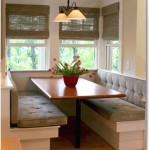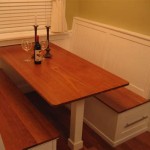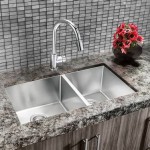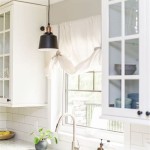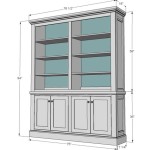4 Hole Kitchen Faucets: A Modern Bathroom Faucet Solution
The ubiquity of single-hole faucets in modern bathroom design often obscures the versatility and potential aesthetic offered by alternative configurations. While single-hole faucets present a streamlined appearance, 4-hole kitchen faucets, typically associated with kitchen sinks, can be repurposed to create unique and functional bathroom installations. Understanding the nuances of 4-hole faucet configurations and their compatibility with bathroom sinks allows for creative solutions that can enhance both the form and function of a bathroom space. This article will delve into the characteristics of 4-hole kitchen faucets, explore their potential applications in bathroom settings, and discuss the factors to consider when integrating these faucets into a modern bathroom design.
Traditional 4-hole kitchen faucets typically consist of four separate components: the main faucet body, a separate hot water handle, a separate cold water handle, and an accessory, often a sprayer or a soap dispenser. These components are designed to be installed through four distinct holes in the sink deck. The spacing between these holes is standardized to some extent, but some variation does exist depending on the manufacturer and style of the faucet. This configuration allows for precise control over water temperature and flow, as well as the integration of useful accessories. The robust construction of many kitchen faucets also makes them durable and long-lasting, characteristics that are highly desirable in a bathroom fixture.
The primary challenge in adapting a 4-hole kitchen faucet for bathroom use lies in finding a suitable sink with the corresponding hole configuration. Most modern bathroom sinks are designed for single-hole or widespread (3-hole) faucets. However, certain countertop sinks, vessel sinks placed on countertops, or custom-designed sinks can be fabricated with the necessary four holes. Alternatively, a deck plate, also known as an escutcheon plate, can be used to cover unused holes in a sink that already has multiple holes. However, this is more commonly used to adapt a 3-hole sink for a single-hole faucet rather than the other way around. The aesthetic appeal of using a deck plate with a 4-hole faucet in a bathroom is subjective and dependent on the overall design scheme.
The availability of 4-hole bathroom sinks is limited, requiring a more creative approach to incorporating a 4-hole kitchen faucet. One approach involves commissioning a custom-made sink that matches the aesthetic preferences and the dimensions required to accommodate the faucet. This approach offers complete control over the sink's material, shape, and hole configuration, enabling a seamless integration of the 4-hole faucet. However, custom fabrication can be a more expensive option compared to purchasing a standard sink.
Aesthetic Considerations and Design Integration
The aesthetic of a 4-hole kitchen faucet is generally more utilitarian than the streamlined designs often found in modern bathrooms. Kitchen faucets are typically designed for functionality and durability, whereas bathroom faucets often prioritize aesthetics and minimalist design. Integrating a 4-hole kitchen faucet into a bathroom requires careful consideration of the surrounding décor and fixtures. It's important to choose a faucet style that complements the overall design of the bathroom. Selecting a faucet with a finish and design that align with the other bathroom fixtures, such as the showerhead, towel bars, and cabinet hardware, is crucial for creating a cohesive and visually appealing space.
The size and scale of the faucet are also important considerations. Kitchen faucets tend to be larger and more substantial than bathroom faucets. Using a faucet that is disproportionately large for the sink or the overall bathroom space can create an unbalanced and visually jarring effect. It is important to take precise measurements and visualize the faucet in the space before making a purchase. Consider the height of the spout relative to the sink bowl; a spout that is too high can cause splashing, while a spout that is too low can make it difficult to wash hands or fill containers.
The choice of materials and finishes can also significantly impact the aesthetic integration of a 4-hole kitchen faucet into a bathroom. Common finishes for kitchen faucets include chrome, brushed nickel, and stainless steel. While these finishes can work well in modern bathrooms, it's important to consider the overall color palette and design style. For example, a chrome faucet might be a good choice for a sleek, minimalist bathroom, while a brushed nickel finish might be more suitable for a transitional or contemporary design. Matte black finishes have also become increasingly popular in both kitchen and bathroom settings, offering a bold and modern look. The key is to select a finish that complements the other fixtures and hardware in the bathroom.
Functional Advantages of 4-Hole Faucets in Bathrooms
Despite the aesthetic considerations, 4-hole kitchen faucets offer several functional advantages that can be particularly appealing in certain bathroom designs. The separate hot and cold water handles provide precise control over water temperature, allowing for a more comfortable and customized washing experience. This is a significant advantage for individuals who prefer to fine-tune the water temperature to their exact liking.
The inclusion of an accessory, such as a sprayer or soap dispenser, can also be highly beneficial in a bathroom setting. A sprayer can be used for rinsing the sink, cleaning the countertop, or even washing hair. A built-in soap dispenser eliminates the need for a separate soap dish or bottle, which can help to keep the countertop clutter-free and organized. These accessories contribute to a more convenient and efficient bathroom experience.
Furthermore, the robust construction of many kitchen faucets makes them highly durable and resistant to wear and tear. This is particularly important in a bathroom, where faucets are often subjected to frequent use and exposure to water and cleaning products. A well-built kitchen faucet can provide years of reliable performance, making it a worthwhile investment in the long run. The typical high flow rate of kitchen faucets can also be beneficial for quickly filling tubs or washing basins, though this may require consideration of drain capacity to avoid overflow.
Installation Considerations and Plumbing Requirements
Installing a 4-hole kitchen faucet in a bathroom requires careful planning and attention to detail. The first step is to ensure that the sink has the necessary hole configuration and that the faucet is compatible with the sink's dimensions. If the sink does not have the required holes, it may be necessary to modify the sink or purchase a custom-made sink. However, drilling additional holes in an existing sink can be risky, as it can damage the sink and void the warranty. It is generally recommended to consult with a professional plumber or contractor before attempting to modify a sink.
The plumbing connections for a 4-hole kitchen faucet are generally straightforward. The hot and cold water supply lines need to be connected to the corresponding handles, and the faucet body needs to be connected to the drain. However, it's important to ensure that the plumbing connections are properly sealed to prevent leaks. Using Teflon tape or pipe sealant on the threaded connections is essential for creating a watertight seal. It is also crucial to check for leaks after the installation is complete.
The placement of the faucet and accessories is also an important consideration. The faucet should be positioned so that it is easily accessible and comfortable to use. The accessories, such as the sprayer or soap dispenser, should be placed in a location that is convenient and practical. It's important to consider the reach of the sprayer and the ease of refilling the soap dispenser when determining their placement. Proper planning and careful execution are essential for a successful installation of a 4-hole kitchen faucet in a bathroom.
Adapting a kitchen faucet for bathroom use might also require adjustments to water pressure regulators or drain sizes to accommodate the different flow rates typically found in kitchen versus bathroom fixtures. Consulting with a qualified plumber ensures these adjustments are correctly made, meeting local plumbing codes and preventing potential issues such as water hammer or drain clogs. While the prospect of using a 4-hole kitchen faucet in a bathroom presents challenges, overcoming them can result in a distinctive and highly functional bathroom design.

Contemporary Two Handle 4 Hole Deck Mount Widespread Kitchen Faucet Rustic Sinks

4 Hole Kitchen Faucets At Com

Bwe Modern Double Handle 4 Holes Deck Mount Bridge Kitchen Faucet With Side Sprayer Sink 360 Swivel Spout In Black C 4082 B The Home Depot

Contemporary Two Handle 4 Hole Deck Mount Widespread Kitchen Faucet Rustic Sinks

Pfister Gt26 4cb

Belknap Ks2331rx Two Handle 4 Hole Deck Mount Industrial Style Bridge Kitchen Faucet With Brass Side Sprayer Polished Chrome

Aimadi 4 In Centerset Double Handle High Arc Bathroom Faucet With Swivel Spout Brass 3 Hole Basin Taps Matte Black Dx 0023 Mb

Contemporary Two Handle 4 Hole Deck Mount Widespread Kitchen Faucet Rustic Sinks

Fontaine Bellver 2 Or 4 Hole Single Handle Traditional Kitchen Faucet Italia Faucets Inc

4 Inch Centerset Bathroom Faucets With Lift Rod Drain Stopper Sink Faucet 3 Holes Dual Handle Vanity 360 Swivel Spout Lavatory Rv
Related Posts

